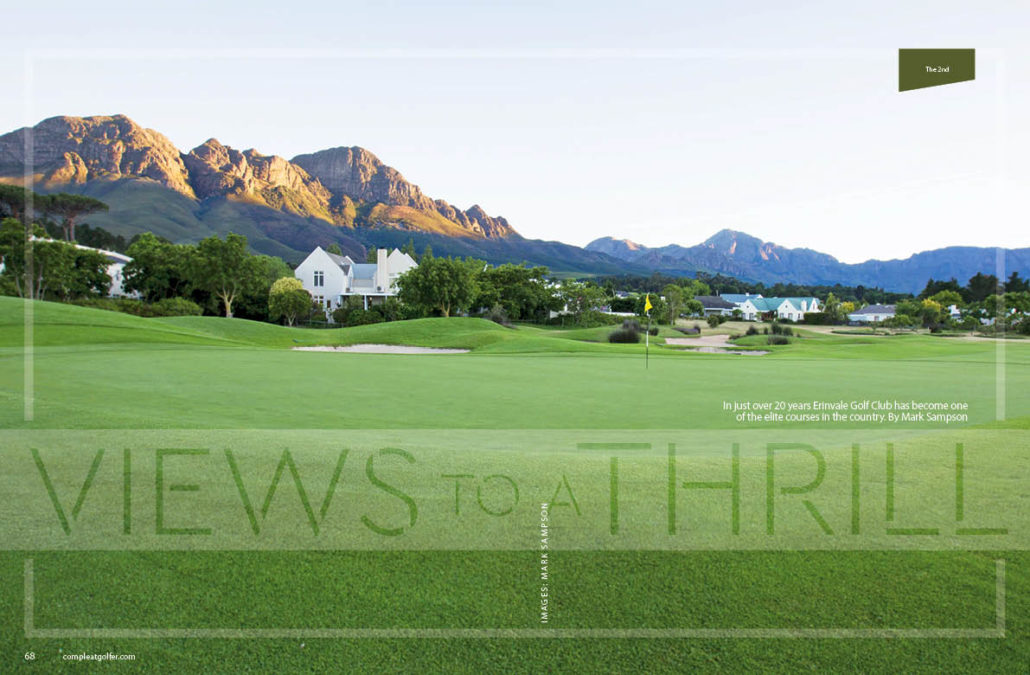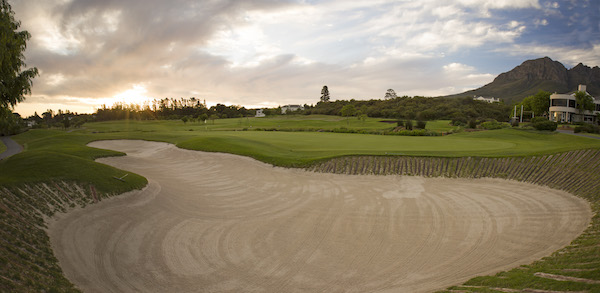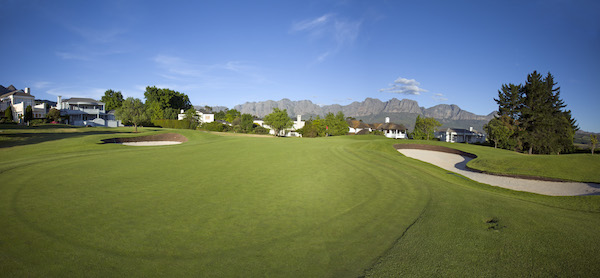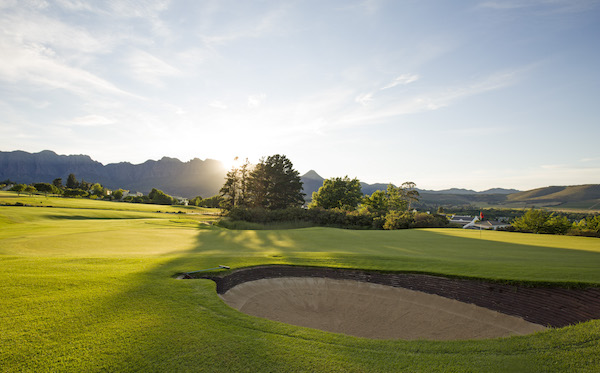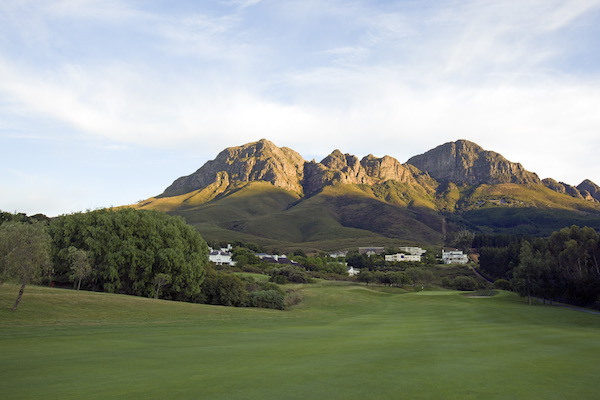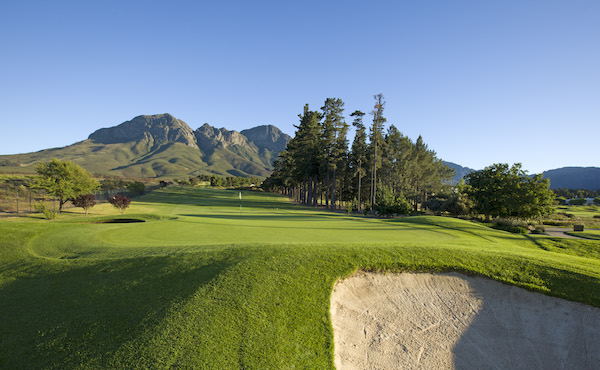In just over 20 years Erinvale Golf Club has become one of the elite courses in the country, writes MARK SAMPSON in Compleat Golfer.
The description of ‘parkland layout’ sells Erinvale short. Located at the base of the Helderberg and Hottentots Holland Mountains in Somerset West, every corner boasts a new view of towering mountains or the blue waters of False Bay.
The story goes that in 1988 the land, originally part of the farm Vergelegen, was earmarked for a high-density development in the same mould as those springing up in Gauteng at the time. The neighbouring land boasted some of the oldest vineyards in the area and a nature reserve, so the thought of a massive development met with opposition from local residents.
One of them, David Gant, the owner of Lourensford Wine Estate at the time, decided to buy the land to stop the plans from going ahead. While on a visit, conservationist Ian Player suggested to Gant that he bring in his brother Gary to help design a golf course, and Erinvale was born.
Under Player’s expert eye, the course was sculpted to run naturally along the contours of the land. The lay of the land dictated the design of two contrasting loops. The first nine takes you through the flatter, more residential part of the estate. The back nine makes its way up towards the slopes of the Helderberg, allowing golfers to enjoy beautiful sea and mountain views.
Its status as a test of golf and championship venue is confirmed by its history of tournaments including the World Cup of Golf in 1996 (only a year after the course’s official opening) and the SA Open in 2003 and 2004. Most recently, it hosted the South African Disabled Golf Open.
The front nine starts off with a strong dogleg to the right and a risk-and-reward option of cutting the corner for the longer hitters. At 419m a long-iron is still required to a narrow green protected by numerous bunkers and a small water hazard. As far as starting holes go, it is a real tester.
The 2nd, although well bunkered, shouldn’t present any problems at 147m; but keep in mind its name, ‘Crosswind’, when making a club selection.
Next up is a reachable par five with bunkers right at the driving and lay-up area. The green also has a number of sand traps surrounding it.
The 4th is a stroke seven due mainly to the two dams up its right flank, but at 356m it is not a long hole. The 5th, aptly named ‘Risk n Reward’, is apparently reachable in one for the longest hitters who can make 295m. The question is whether they are skilful enough to avoid the sand on the left and water on the right.
The stroke one comes in the form of a lengthy par four. It is 414m off the club tee, with a green that appears squeezed between a bunker on the left and a water hazard to the right.
The par five that follows gives some respite with a generous fairway. At 492m it is not short, so its length and a rivulet crossing the fairway 80m from the bunkered green provide its main protection.
The par-three 8th is a scenic hole. Aptly named ‘The Signature’, it plays to an elevated green surrounded by pine trees with two bunkers. It’s only 153m, but the slight change in elevation and trees surrounding the green make it difficult to assess wind strength and direction. Head professional Morne Oosthuizen talks us through this tricky hole on page 75.
The final hole of the nine is all about the approach. Even a good drive, avoiding the numerous bunkers, will leave a lengthy second shot. The green is narrow and protected by a hazard across its front left side and a bunker on the right.
The friendly and efficient halfway house adds value to the enjoyable experience at Erinvale.
The contrasting back nine is introduced by a steep climb to the tee box. Continual changes in elevation and uneven stances require more attention in terms of club selection and shot-making. The slope of the fairway on the 10th instantly sets the tone, influencing the approach
to the green and making it difficult to hold.
The 11th is short and if the fairway bunkers are avoided, a par is up for grabs. The par-three 12th is only 152m but the raised green requires at least one extra club to avoid landing short or in one of the bunkers. The 13th, a postcard-perfect par five, plays directly towards the mountains, which seemingly tower over you when on the green. It is a dogleg left with a fairway that rises and falls before the raised green, which can be reached in two by the long hitters.
The par-three 14th is another stunning, although innocuous, hole with water that shouldn’t come into play. The par-four 15th is the highest point with spectacular views of the mountains, the suburbia of Somerset West and the Strand hugging the ocean in the distance.
Unfortunately its stroke four will bring you back to earth with its steep drop in elevation and a long, thin green. The course now starts to descend back to the clubhouse.
The par-five 16th has a steep downhill fairway with out of bounds down the right side. At 539m, reaching the green in two is unlikely. The stroke-two 17th, having out of bounds on the right and a pine forest on the left, requires accuracy off the tee. A long-iron to a green surrounded by bunkers all adds to its deserved rating.
The closing hole is aptly named ’Pot Luck’ owing to the numerous bunkers littering the fairway and the generous green’s surrounds. Like the rest of the course, it is a fair hole which, if managed correctly, should result in a par.
From start to finish, Erinvale sets a high standard on and off the course. Most noticeable is the attention to detail of the manicured course and gardens of the estate.
Above all, however, is the professional, yet friendly demeanour of the staff, from the entrance guards to the gardener on the cart paths. It is no wonder that with its continued high standards and incredible location, it is a firm favourite of golfers locally and abroad.
CONTACT
Pro Shop: 021 847 1906
Bookings co-ordinator: Robynne Payne
Clubhouse: 021 847 1144
– This article first appeared in the February 2017 issue of Compleat Golfer magazine


